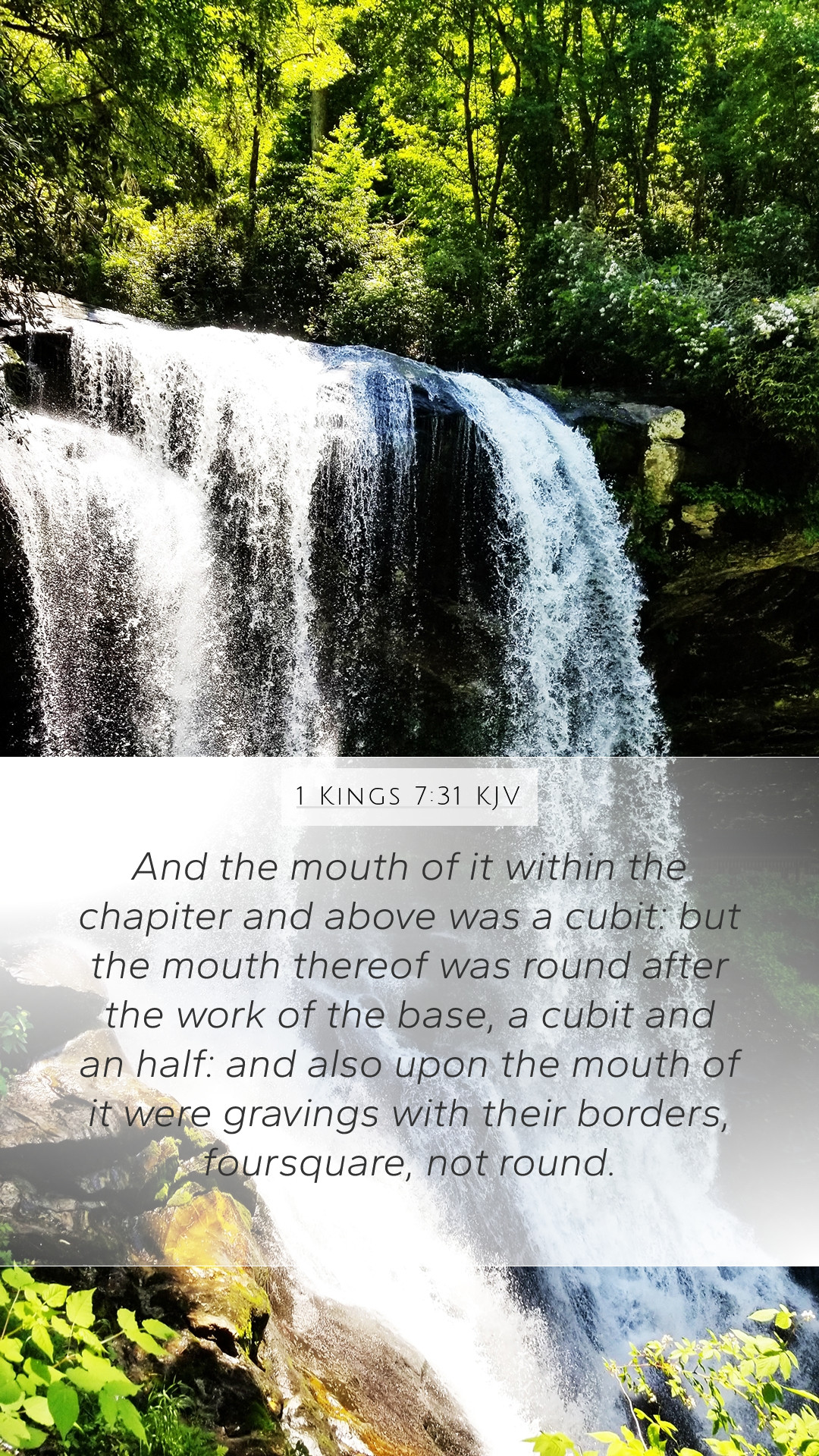Bible Verse Commentary: 1 Kings 7:31
Verse: "And the mouth of it was in the top of the pillar, and it was round, like the work of the hand of a man: a cubit and a half in diameter; and also upon the mouth of it were engravings with the one and the other leaves." (1 Kings 7:31)
Overview of 1 Kings 7:31
This verse refers to the intricate design of the brass pillars created by King Solomon for the Temple. The description highlights the artistry and craftsmanship that characterized the construction of the Temple, reflecting the glory of God and the dedication of His house.
Bible Verse Meanings
1 Kings 7:31 signifies the meticulous attention to detail in the construction of sacred spaces. It offers a window into the artistic and spiritual dimensions of Israel's worship environment. The pillars stand not only as physical structures but also as symbols of strength, stability, and the holy commitment of the people to God.
Bible Verse Interpretations
Interpretation of this verse can be nuanced, as different commentators provide insights:
-
Matthew Henry: Emphasizes the beauty and strength of the pillars as a representation of God's majesty. The engravings are seen as ornamental features that draw attention to the sacredness of the Temple.
-
Albert Barnes: Focuses on the practical details of the construction, interpreting the specific measurements and designs as a reflection of divine order and providence in the building of the Temple.
-
Adam Clarke: Notes that the artistic elements of the pillars reflect the creativity bestowed upon humanity by God, illustrating that human endeavors in art and craftsmanship can honor the Divine.
Bible Verse Understanding
Understanding this verse within its historical context sheds light on Solomon's ambition and dedication. The Temple represented a central aspect of Israelite identity and worship, and the attention to detail signifies their commitment to honoring God through beauty and excellence.
Bible Verse Explanations
Significantly, 1 Kings 7:31 illustrates the intersection of faith and creativity. The craftsmanship of the pillars invites believers to appreciate the beauty in worship and the importance of creating environments that honor God. The details of the pillars provoke reflection on how modern-day spaces for worship can be designed to promote a sense of reverence and connection to the Divine.
Scripture Analysis
This verse not only describes physical attributes but also opens avenues for theological reflection. It compels readers to consider:
- How does beauty in worship enhance our spiritual experience?
- In what ways can our creative expressions reflect our faith?
- What does this indicate about God’s desire for His dwelling places?
Biblical Exegesis
The examination of 1 Kings 7:31 through exegesis offers deeper insight into the role of the Temple in biblical history. It symbolizes the covenant relationship between God and Israel, serving as a physical manifestation of God's presence among His people.
Bible Study Insights
For those engaging in Bible study groups or online Bible study, 1 Kings 7:31 can serve as a focal point for discussions about:
- Biblical architecture and its significance
- The role of artisans and craftsmen in ancient Israel
- The importance of excellence in service to God
Related Bible Cross References
- 2 Chronicles 3:15 - Details about the pillars of the Temple.
- 1 Kings 6:15-16 - Description of the interior of the Temple.
- Jeremiah 52:21 - Discusses the pillars that were made in the Temple.
Conclusion
In summary, 1 Kings 7:31 invites believers to contemplate the intersection of faith and craftsmanship and the significance of building environments that reflect God’s glory. It encourages a rich exploration of biblical architecture, divine immanence, and the principles of excellence in worship.


